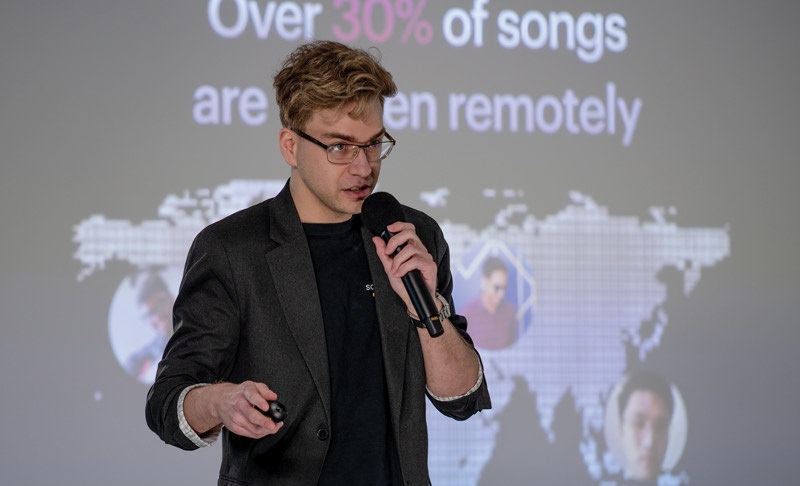Graphite Innovation and Technologies, or GIT, has inked a $2.4 million deal with Transport Canada to develop technology aimed at reducing underwater noise pollution and cutting ships’ greenhouse gas emissions.
Founded in 2017 by Mo AlGermozi and Marciel Gaier, Dartmouth-based GIT manufactures graphene coatings designed to prevent corrosion and improve the durability of ships hulls, dams and other equipment subjected to extreme environments. Graphene is a carbon-based material that is 200 times stronger than steel and efficiently conducts heat and electricity.
“[Noise pollution] is a concern worldwide, and I’m happy that Canada is investigating this area, given the fact that it has lots of impact on marine mammals,” said CEO AlGermozi in an interview. “During COVID-19 ... we’ve noticed the big whales up in Vancouver not needing to scream underwater anymore to find each other because the noise pollution is reduced.”
AlGermozi was referring to the improved health and easier communication displayed by Orca pods off Canada’s West Coast, as a result of reduced shipping traffic. Ships engines usually generate large amounts of underwater noise that can interfere with sea life’s echolocation and even cause internal bleeding.
GIT said in a statement that, since the 1950s, underwater noise levels have more than tripled, on average.
“This is toxic noise,” said AlGermozi. “[Reducing it] is like going greener in another way.”
Supercluster Backs $29M Ocean Aware Project
GIT’s coating does not leach into the water – unlike conventional, toxic marine coatings – and is certified by Green Marine, which endorses companies that adhere to 13 environmental performance metrics.
The coating also has potential applications in other industries, such as the automotive and electronic sectors, but GIT is focusing its scaleup efforts on marine customers.
AlGermozi said GIT’s agreements with its business partners prevented him from discussing in detail the new technology at the centre of the Transport Canada deal. But in its statement, GIT said its role in the project will be to apply a graphene coating called XGIT to First Nations fishing vessels to test its usefulness for reducing marine noise and improving fuel efficiency.
Also working on the project is Lloyd’s Register, a professional services firm that specializes in engineering and technology solutions. It will help monitor noise levels and track the fuel consumption of the First Nations boats.
John Hicks, who is president of marine and offshore operations for Lloyd’s Register in the Americas, said the project could “bring significant and long-lasting improvements to a Canadian domestic fishing fleet.”
The deal comes as GIT is raising a $4 million to $5 million funding round, with an emphasis on “smart money.” AlGermozi said his team is starting with existing investors, but is open to new, strategic partners.
“We take raising capital as a partnership opportunity because we want to partner and grow with the right people,” he said.
AlGermozi added that the funding environment has proved hospitable for GIT, despite COVID-19, with investors continuing to approach the company during the pandemic.
GIT started with two employees and now has a staff of eight, with three more hires planned before the end of the year. By the end of 2021, AlGermozi hopes to have 15 employees.










